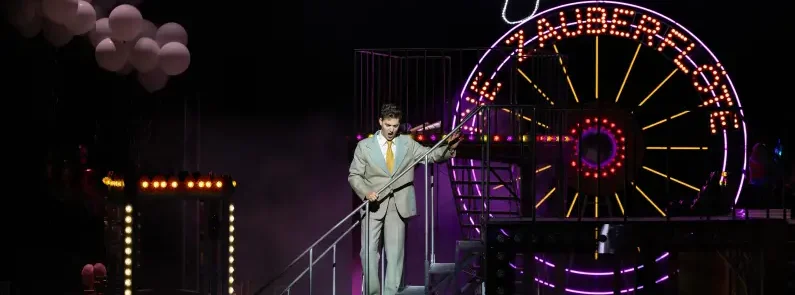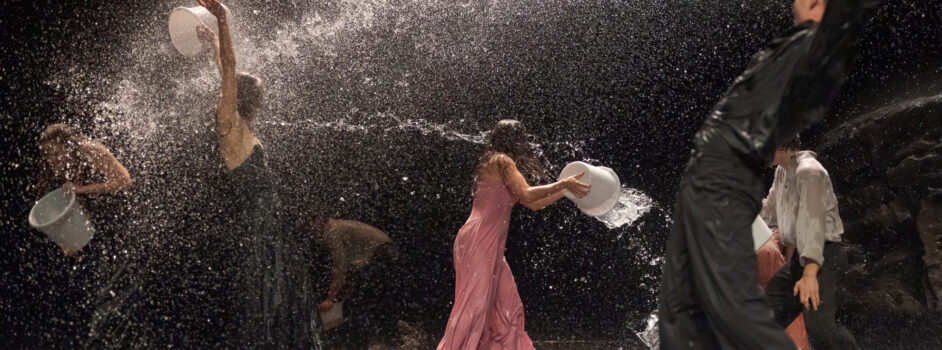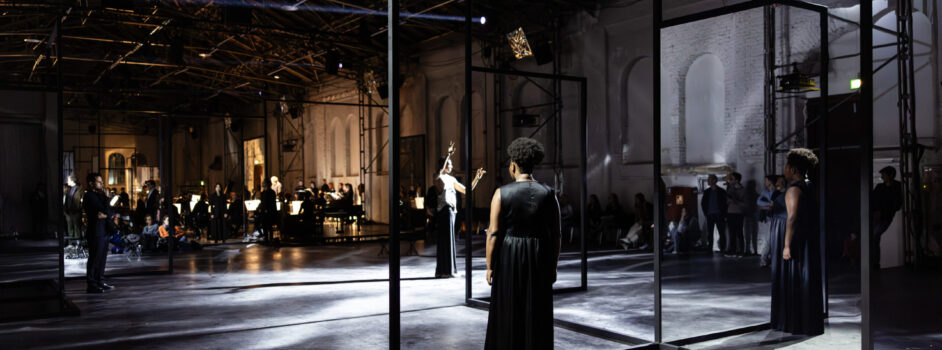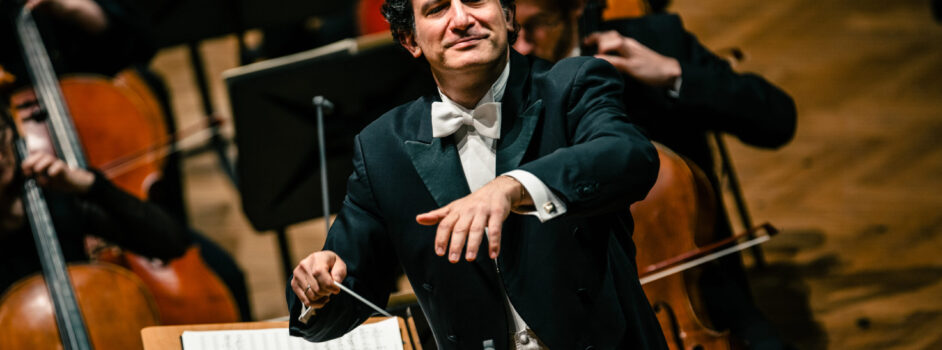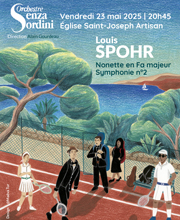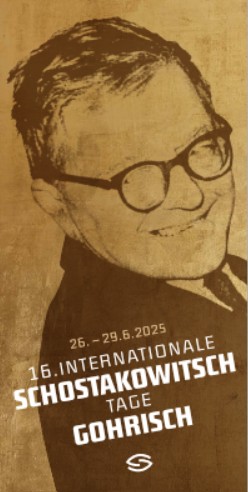Plus de détails
Théâtre de la Ville. 22/X/13. Trisha Brown Dance Company : Premier programme. For M.G. : The Movie (1991). Chorégraphie, scénographie et costumes : Trisha Brown. Musique : Alin Curran. Lumières : Spencer Brown, avec Trisha Brown. Avec Neal Beasley, Cecily Campbell, Megan Madorin, Tamara Riewe, Jamie Scott, Stuart Shugg, Nick Strafaccia et Samuel Wentz. Homemade (1966). Film de Babette Mangolte d’après un film original de Trisha Brown et de Robert Whitman. Scénographie : Trisha Brown et Robert Whitman. Costumes : Kaye Voyce. Solo dansé par Vicky Schick. Newark (Niweweorce) (1987). Chorégraphie : Trisha Brown. Scénographie et concept sonore : Donald Judd. Orchestration sonore et réalisation : Peter Zummo, avec Donald Judd. Lumières : Ken Tabachnick. Avec Tara Lorenzen, Megan Madorin, Tamara Riewe, Jamie Scott, Stuart Shugg, Nick Straffacia et Samuel Wentz.
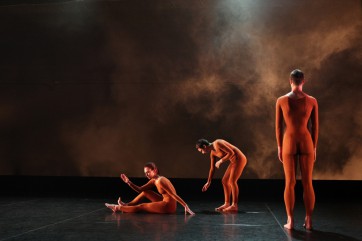 The Trisha Brown Dance Company devoted its first night in Paris to a focus on cinema, beginning with For M.G.: The Movie, a 1991 tribute to Michel Guy, Secretary of State for Culture and head of the Festival d'Automne. On a richly evocative soundtrack (featuring the sounds of a roaring engine, a freighter ready to leave port, and Indians in a trance state, among other things), the dancers move with composure and virtuosity in a sultry, dusky atmosphere. The hypnotic effect of their repeated jumps and slow movements is reinforced by the imaginary space developed by the soundtrack. Late afternoon lighting, sound effects, slow motion, all these special effects immerse the spectator in a moving film.
The Trisha Brown Dance Company devoted its first night in Paris to a focus on cinema, beginning with For M.G.: The Movie, a 1991 tribute to Michel Guy, Secretary of State for Culture and head of the Festival d'Automne. On a richly evocative soundtrack (featuring the sounds of a roaring engine, a freighter ready to leave port, and Indians in a trance state, among other things), the dancers move with composure and virtuosity in a sultry, dusky atmosphere. The hypnotic effect of their repeated jumps and slow movements is reinforced by the imaginary space developed by the soundtrack. Late afternoon lighting, sound effects, slow motion, all these special effects immerse the spectator in a moving film.
This nod to cinema continues with Homemade, a solo danced by Vicky Schick. With a projector on her back, she faithfully reproduces the solo of the same title recorded on film by Babette Mangolte, whose image moves around the theater, from the proscenium to the audience, in accordance with the dancer's movements. This is among Trisha Brown's earliest works, created in parallel with the beginnings of the Judson Church Dance Theater in New York.
After the intermission, the audience is greeted with Newark. Donald Judd's huge monochrome paint drops, rising and falling in a slow rhythm, alternately reveal and conceal the stage space over the course of the work. Vermilion red, sunny yellow, brick red, or Klein blue, these heavily pigmented canvases leave the dancers free to explore methodically the transfer of the body's intrinsic weight as modified by the effects of the dancers' training. Despite the colorful design, this is an austere piece, featuring complex configurations, in a flawless performance by the dancers of the Trisha Brown Dance Company. This dance is even less ingratiating than Merce Cunningham's: it seeks symmetry, but not line; unison, but not harmony. Discordant, yet masterful, this is a fascinating choreography nonetheless.
Copyright : For M.G. : The Movie © Julieta Cervantes
Plus de détails
Théâtre de la Ville. 22/X/13. Trisha Brown Dance Company : Premier programme. For M.G. : The Movie (1991). Chorégraphie, scénographie et costumes : Trisha Brown. Musique : Alin Curran. Lumières : Spencer Brown, avec Trisha Brown. Avec Neal Beasley, Cecily Campbell, Megan Madorin, Tamara Riewe, Jamie Scott, Stuart Shugg, Nick Strafaccia et Samuel Wentz. Homemade (1966). Film de Babette Mangolte d’après un film original de Trisha Brown et de Robert Whitman. Scénographie : Trisha Brown et Robert Whitman. Costumes : Kaye Voyce. Solo dansé par Vicky Schick. Newark (Niweweorce) (1987). Chorégraphie : Trisha Brown. Scénographie et concept sonore : Donald Judd. Orchestration sonore et réalisation : Peter Zummo, avec Donald Judd. Lumières : Ken Tabachnick. Avec Tara Lorenzen, Megan Madorin, Tamara Riewe, Jamie Scott, Stuart Shugg, Nick Straffacia et Samuel Wentz.

